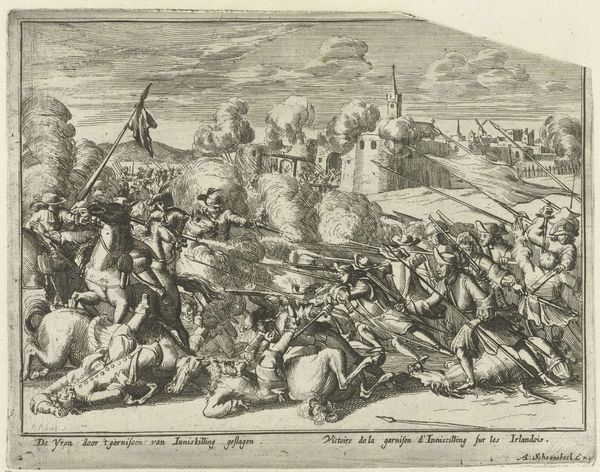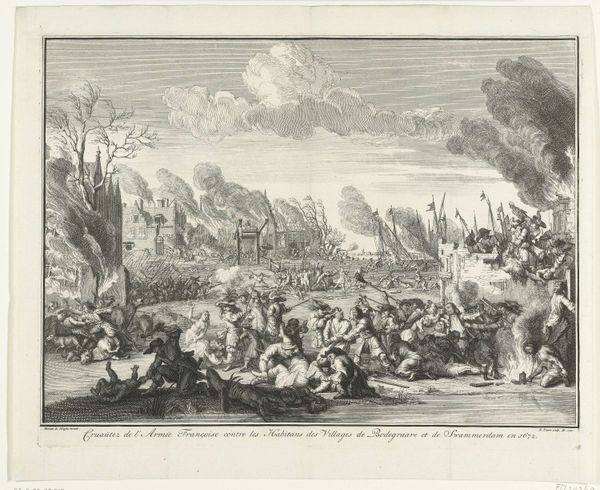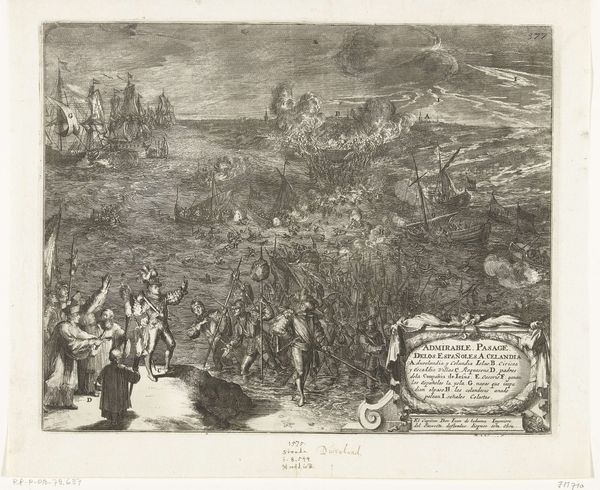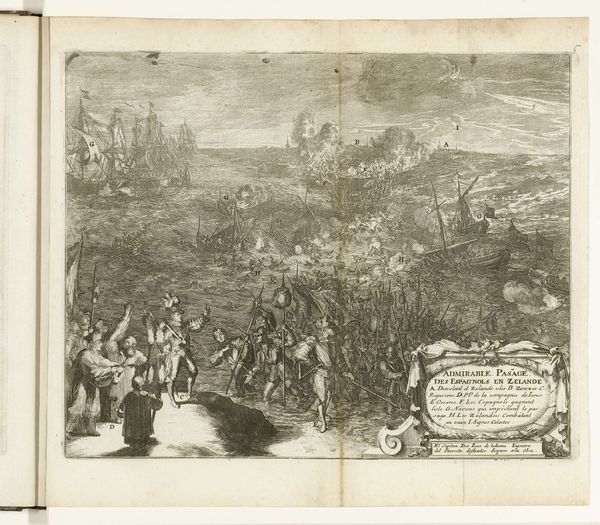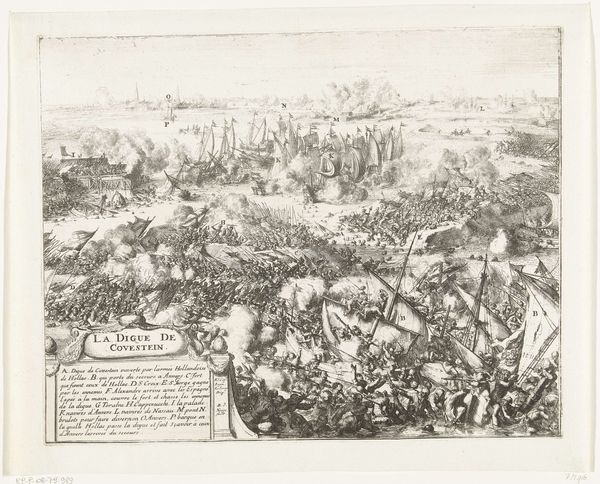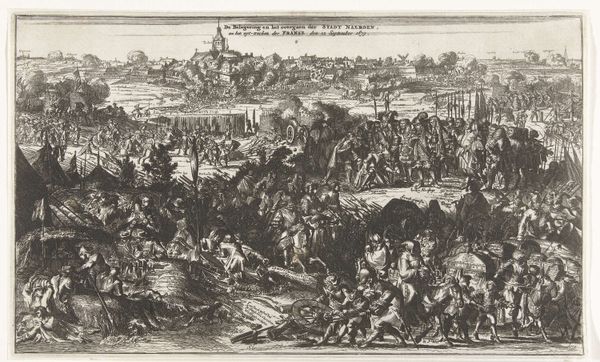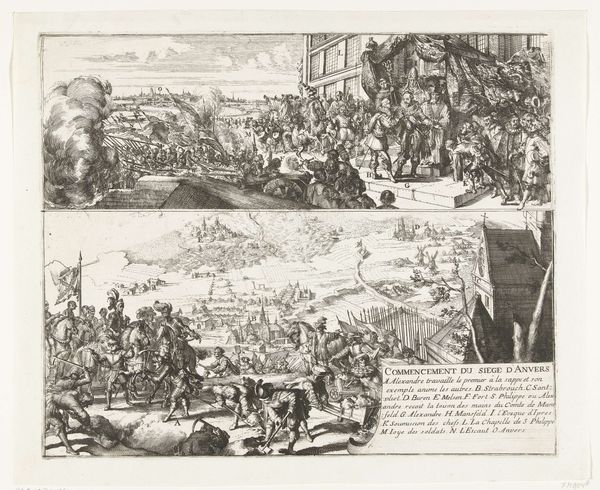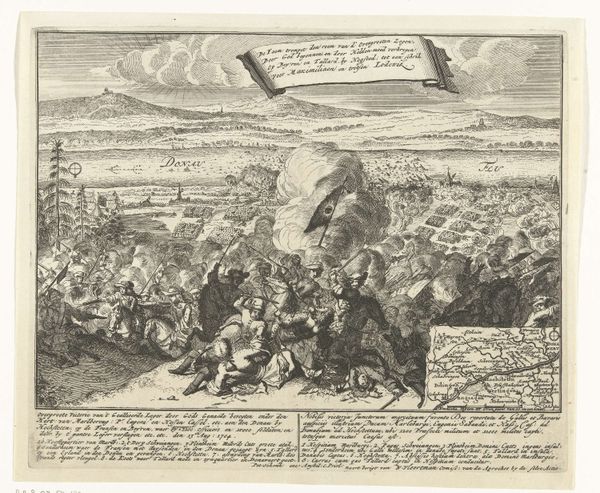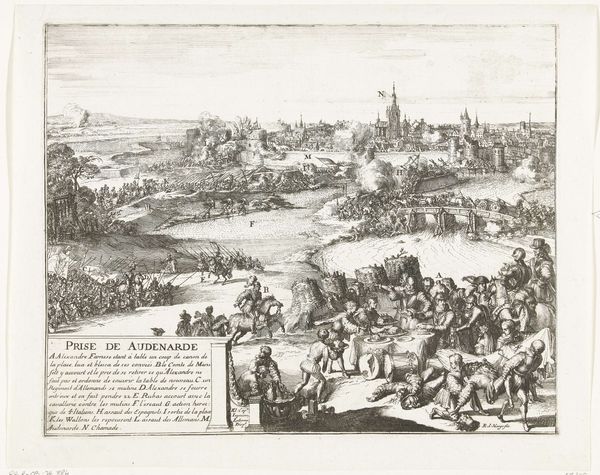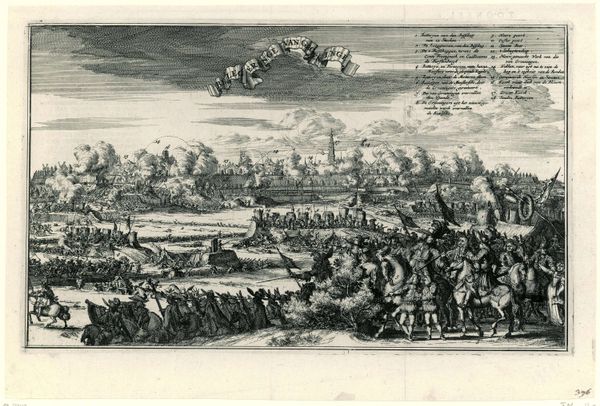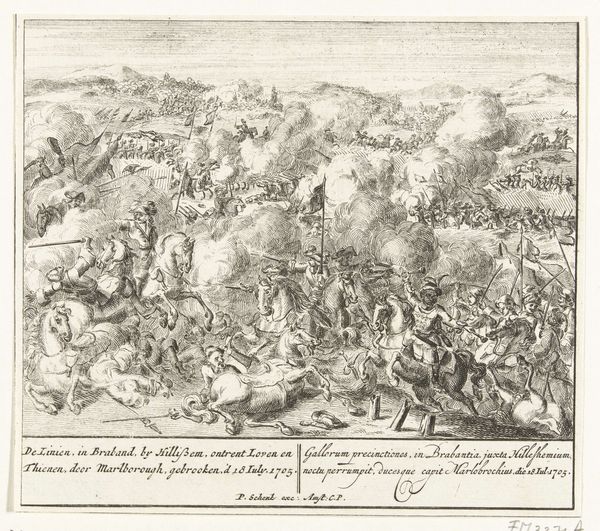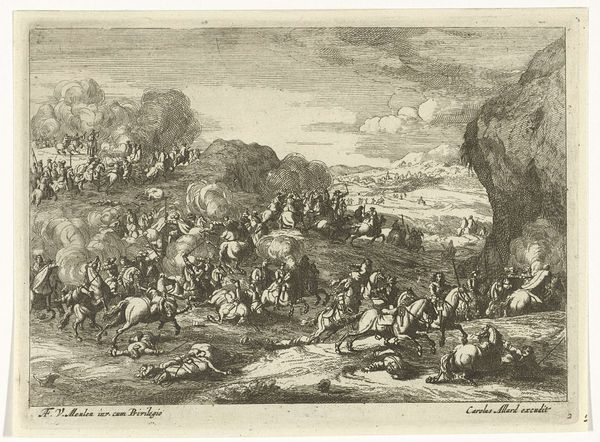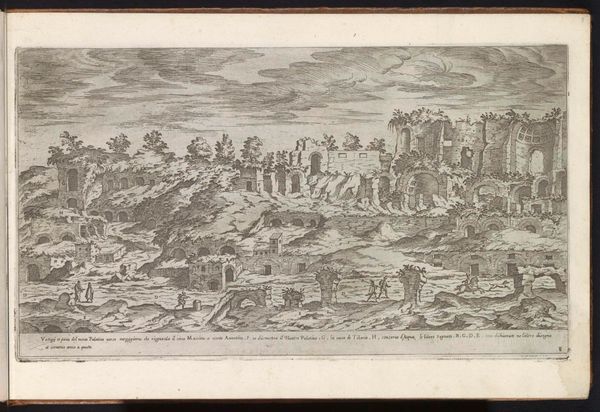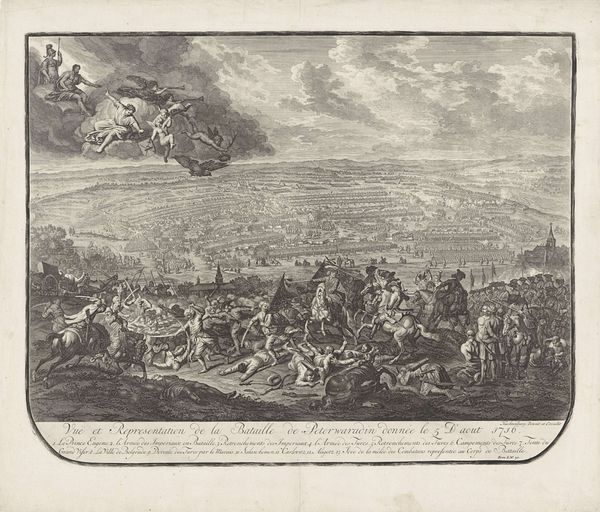
print, etching, engraving
#
narrative-art
#
baroque
# print
#
pen sketch
#
etching
#
old engraving style
#
pen work
#
sketchbook drawing
#
cityscape
#
history-painting
#
engraving
Dimensions: height 269 mm, width 333 mm
Copyright: Rijks Museum: Open Domain
Romeyn de Hooghe created this print depicting the ‘Inname en plundering van Neuss’ – the capture and plundering of Neuss – in 1686. The image shows the Spanish army’s brutal siege of the city two hundred years earlier. De Hooghe’s image makes meaning through a codified visual language of violence and power, referencing a specific historical event, and aligning itself with a broader cultural narrative around Dutch identity. It seems to valorize military strength and Spanish power. Historical research reveals that Neuss was besieged during the Eighty Years’ War, a conflict deeply intertwined with the formation of Dutch national identity. Through archives, we can analyze the print's production in the context of the Franco-Dutch War and the Year of Disaster in 1672. De Hooghe worked for William III, so the print may have been a form of political propaganda during a time of national crisis. Ultimately, understanding art requires us to investigate its historical, social, and institutional context.
Comments
No comments
Be the first to comment and join the conversation on the ultimate creative platform.
